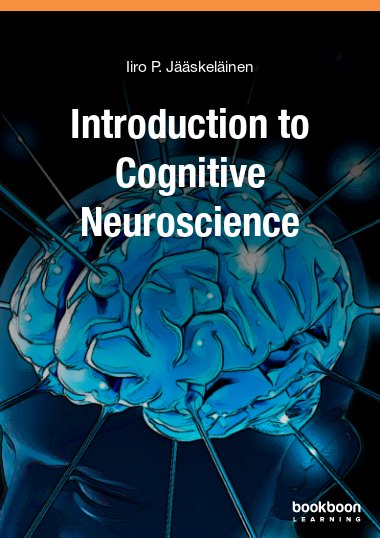Cognitive neuroscience is an exciting and a relatively new area of research into the neural basis of the human mind. Using sophisticated neuroimaging technology, it is possible to study how the brain allows one to think, remember, see, hear, smell, touch, attend, feel emotions, understand others, and be motivated to pursue goals in life. This book gives an introduction to research methods of cognitive neuroscience, brain anatomy, neuronal signaling, and the neural basis of perception, attention, memory, plasticity, language, executive functions, emotions, social cognition, and consciousness.

الوصف
المحتوى
التعليقات
- What is cognitive neuroscience?
- Why is cognitive neuroscience important?
- The brief history of cognitive neuroscience
- The present and exciting future of cognitive neuroscience
- The purpose of this book
- References
- Methods of Cognitive Neuroscience
- Behavioral measures of cognitive and perceptual functions
- Invasive neuronal recordings in animal models
- Non-invasive functional neuroimaging methods
- Concluding remarks
- References
- Anatomy of the brain
- Anatomical coordinate systems
- Central and peripheral nervous systems
- Gross anatomical divisions of the brain
- The cerebrum
- The cerebral cortex is folded into gyri and sulci
- Beneath the cerebral hemispheres: the limbic system and basal ganglia
- The ventricular system
- Connectivity of the brain
- Concluding remarks
- References
- Neurons
- Neurons are the elementary building blocks of cognition
- Mechanisms underlying neural signaling
- Chemical messaging at the synapses
- Neurons form networks
- Concluding remarks
- References
- Sensory and motor systems
- The sensory systems
- The motor system
- Concluding remarks
- References
- Attention
- Selective attention
- Involuntary attention
- Voluntary shifting and dividing of the focus of attention
- Neurotransmitter basis of attention
- Concluding remarks
- References
- Memory and Learning
- Memory and learning: behavioral observations
- The neural basis of memory
- Concluding remarks
- References
- Plasticity
- Developmental plasticity
- Plasticity due to loss of sensory input
- Smaller scale plasticity: sensory/perceptual learning
- Plasticity associated with recovery from brain damage
- Neurogenesis, stem cell treatments and plasticity
- Concluding remarks
- References
- Speech and Language
- Language is a multifaceted and complex cognitive function
- Behavioral studies of human language
- Neural basis of speech and language
- The motor theory of speech perception
- Distributed representations underlie concepts
- Concluding remarks
- References
- Executive functions
- Prefrontal cortex is central for executive functions
- The constituents of executive functions
- Neuropsychological tests that measure executive functions
- Neurochemistry of executive functions
- Concluding remarks
- References
- Emotions
- Definitions of emotions
- Emotions result from contextual interpretation of autonomic nervous system responses
- Induction of emotions in experimental settings
- Methods for assessing emotions
- Neural basis of emotions
- Concluding comments
- References
- Social cognition
- Demands on social cognition predict evolution of cortex
- Social cognition is composed of multiple functions
- Concluding remarks
- References
- Consciousness
- Consciousness as awareness of externally applied stimuli
- Consciousness as self-awareness
- Concluding remarks
- References
this is a very well written book and it gives a very good overview of the field of Cognitive Neuroscience. The book is well structured and very interesting with many points to discover even if you already have knowledge of the subject. There is a lot of information for many in this book, different perspectives and clear approach on the matter.
great book!
Amazing book - really gives the important information in a very understandable manner!
This book is very relevant and it helps me in remembering some basic terms; most importantly it's short and precise, thank you so much for this wonderful book! keep it up!!
Content is easy to comprehend. For me, it made NeuroScience appear to be more interesting even with the technical facts.